Paraiba Tourmaline is a gemstone renowned for its vivid and mesmerizing colors, prized by gem enthusiasts and collectors alike. This gemstone derives its name from the Brazilian state of Paraíba, where it was first discovered in the late 1980s. It belongs to the tourmaline family, a group of minerals known for their remarkable range of colors.
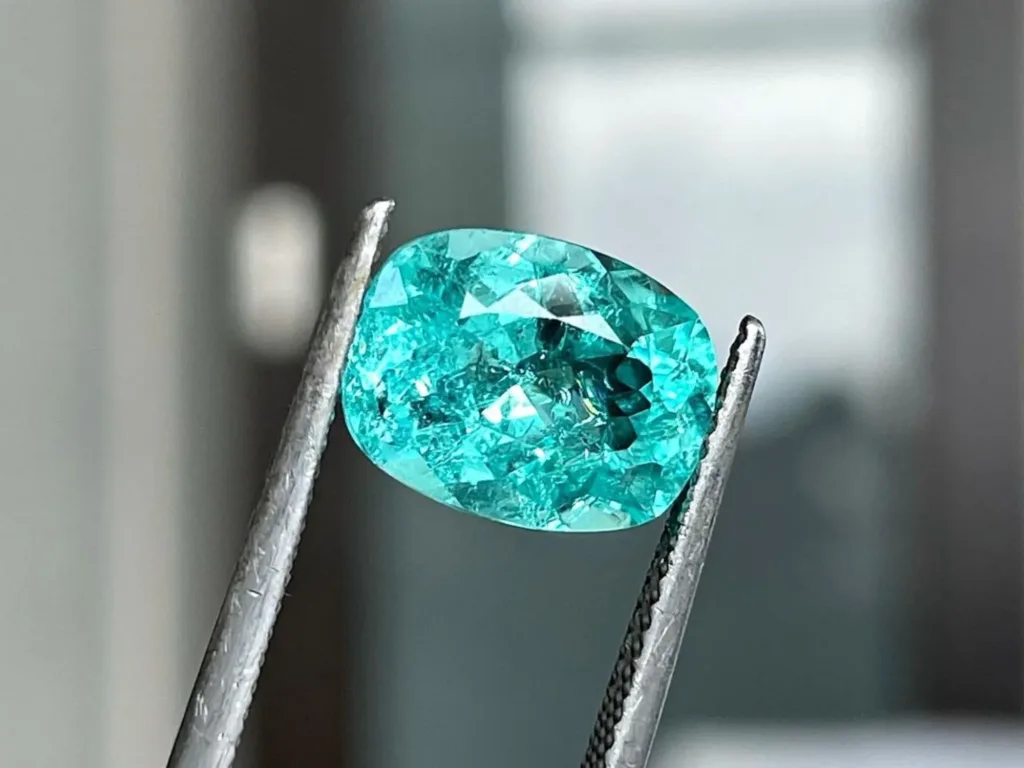
Definition of Paraiba Tourmaline
Paraiba Tourmaline is a variety of tourmaline characterized by its striking hues of blue, green, or violet. What sets it apart is its unique neon or electric coloration, often described as “electric” or “neon” due to its intense saturation and vibrant glow. This distinct coloration is attributed to the presence of trace amounts of copper and manganese within the crystal structure.
Significance and Rarity
The significance of Paraiba Tourmaline lies not only in its captivating beauty but also in its extreme rarity. True Paraiba Tourmaline, characterized by its signature vivid hues, is exceptionally scarce and commands high prices in the gem market. This rarity is due to several factors:
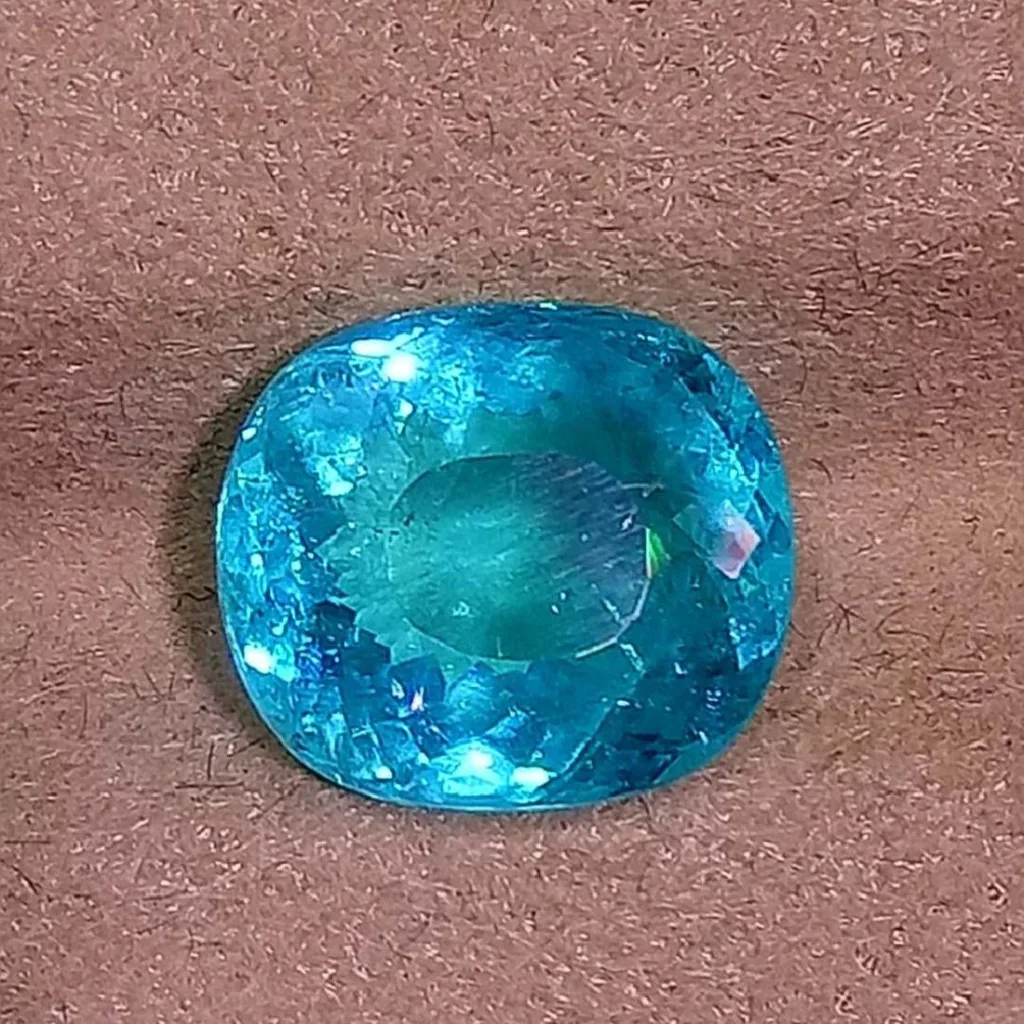
- Limited Geographic Origin: Genuine Paraiba Tourmaline is primarily found in specific geological formations in Brazil, particularly in the state of Paraíba. Other deposits have been discovered in Mozambique and Nigeria, but they are generally less prized due to differences in color and quality.
- Unique Chemical Composition: The distinctive coloration of Paraiba Tourmaline is attributed to the presence of copper and manganese, which form as inclusions within the crystal lattice. This specific chemical composition is relatively rare, further adding to the gem’s scarcity.
- Demand and Popularity: The stunning beauty and rarity of Paraiba Tourmaline have led to significant demand among collectors, jewelry enthusiasts, and connoisseurs. This high demand, coupled with limited availability, contributes to its status as one of the most sought-after gemstones in the world.
Due to its rarity and popularity, Paraiba Tourmaline is often considered a prized addition to fine jewelry collections and is highly valued for its beauty, uniqueness, and investment potential. However, it’s essential to ensure the authenticity of Paraiba Tourmaline, as synthetic and treated versions are sometimes encountered in the market. Genuine Paraiba Tourmaline is certified and authenticated by reputable gemological laboratories to guarantee its authenticity and value.
Geological Formation and Mining Locations
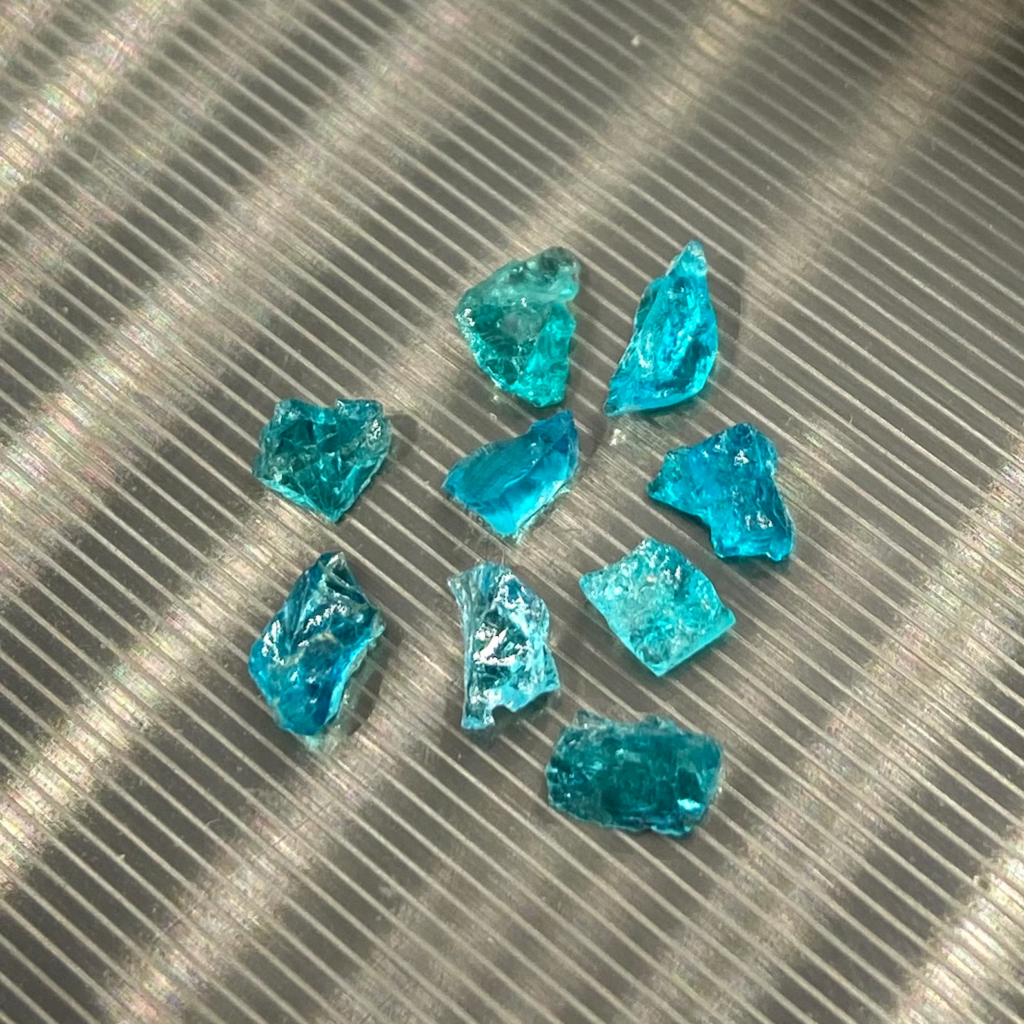
Paraiba Tourmaline is primarily found in specific geological formations in Brazil, particularly in the state of Paraíba, which is where it gets its name from. The exact geological processes that lead to the formation of Paraiba Tourmaline are complex and involve the interaction of various elements and conditions over millions of years.
Geological Formation:
- Pegmatite Deposits: Paraiba Tourmaline typically forms in pegmatite deposits, which are coarse-grained igneous rocks that often contain a variety of minerals, including tourmaline. Pegmatites are formed during the late stages of magma crystallization and are known for their large crystals and high concentration of rare elements.
- Hydrothermal Processes: The formation of Paraiba Tourmaline may also involve hydrothermal processes, where hot fluids rich in elements such as copper and manganese percolate through existing rock formations, depositing minerals within fractures and cavities.
- Trace Elements: The vibrant colors of Paraiba Tourmaline are attributed to the presence of trace elements, particularly copper and manganese, within the crystal structure. These elements interact with the tourmaline’s chemical composition to produce the gemstone’s unique neon or electric hues.
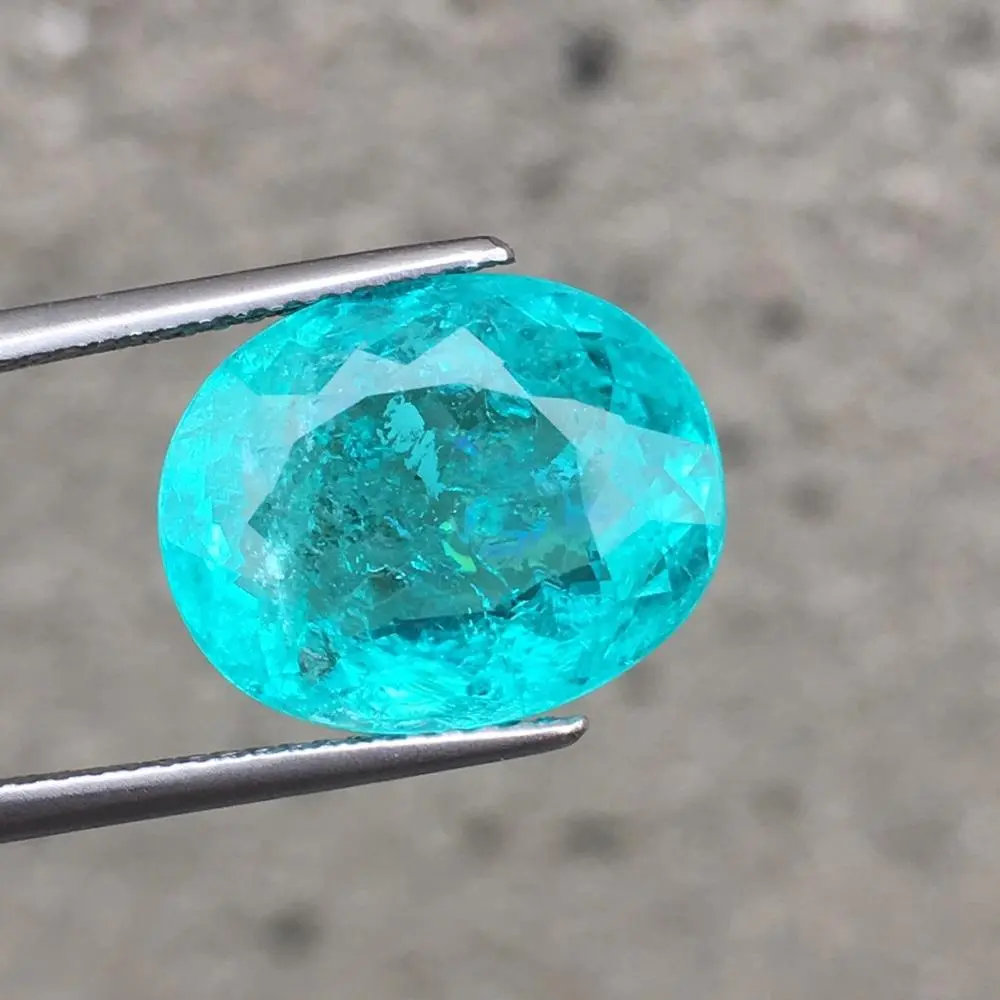
Mining Locations:
The primary mining locations for Paraiba Tourmaline are:
- Brazil (Paraíba State): The original and most renowned source of Paraiba Tourmaline is the state of Paraíba in northeastern Brazil. The gem was first discovered here in the late 1980s, near the towns of São José da Batalha and Boqueirão. The Paraíba deposits are known for their vibrant blue and green tourmalines, prized for their exceptional color saturation.
- Mozambique: In the early 2000s, significant deposits of tourmaline were discovered in Mozambique, particularly in the Niassa and Zambezia provinces. While these Mozambican tourmalines share some similarities with Paraiba Tourmaline, including their copper-bearing nature and vivid colors, they are geologically distinct and often exhibit slightly different hues.
- Nigeria: Tourmaline deposits have also been found in Nigeria, primarily in the Jos Plateau region. Nigerian tourmalines, like those from Mozambique, may exhibit colors similar to Paraiba Tourmaline, but they are considered separate varieties due to differences in their geological origin and chemical composition.
While Paraiba Tourmaline from Brazil remains the most coveted and valuable, Mozambican and Nigerian tourmalines have gained recognition in the market, offering alternatives to collectors and jewelry enthusiasts. However, true Paraiba Tourmaline from Brazil retains its status as the pinnacle of tourmaline beauty and rarity.
Physical and Optical Characteristics of Paraiba Tourmaline
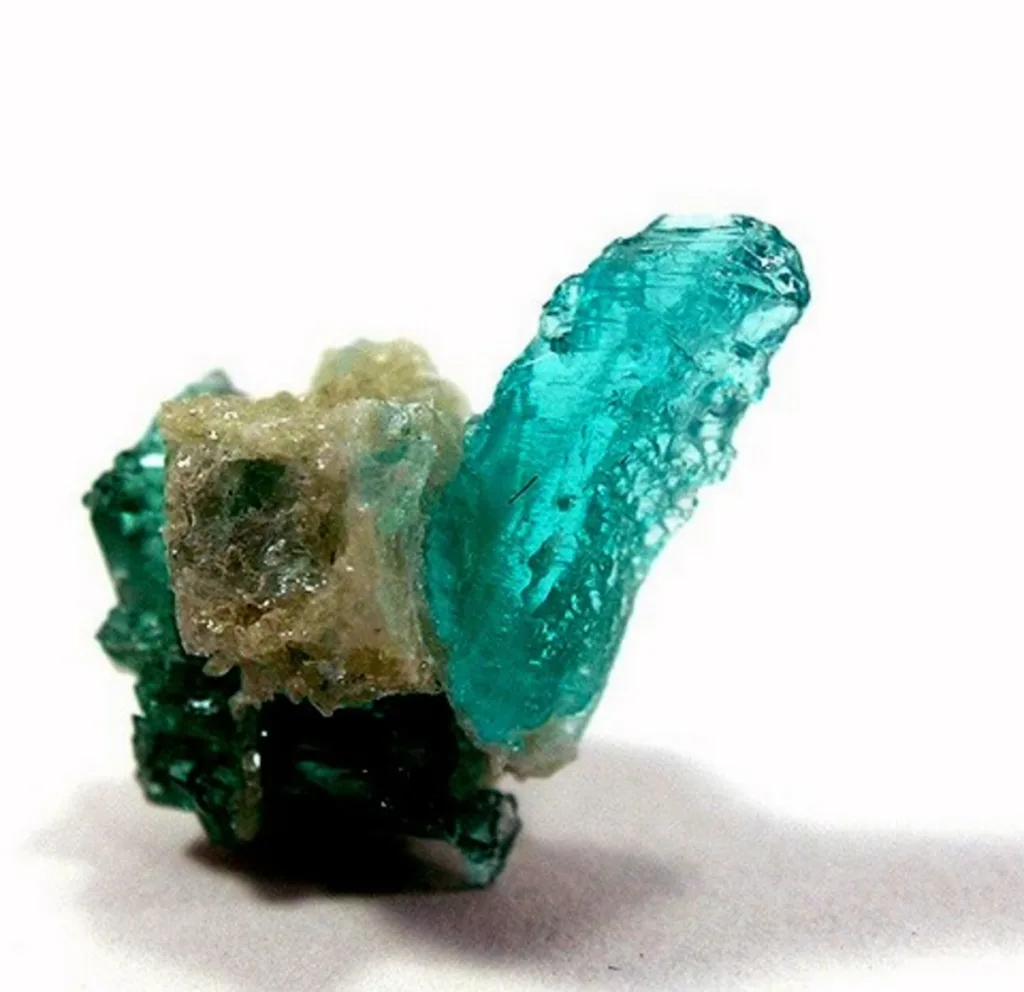
Paraiba Tourmaline possesses a range of physical and optical characteristics that contribute to its allure and value as a gemstone:
Physical Characteristics:
- Hardness: Paraiba Tourmaline has a hardness of 7 to 7.5 on the Mohs scale, making it relatively durable and suitable for everyday wear in jewelry.
- Crystal System: It crystallizes in the trigonal crystal system, typically forming elongated prismatic crystals with striations along their length.
- Color: One of the most distinguishing features of Paraiba Tourmaline is its vibrant and saturated colors, which range from vivid blues and greens to electric purples and violets. The gemstone’s unique coloration is attributed to trace amounts of copper and manganese within its crystal structure.
- Transparency: Paraiba Tourmaline is typically transparent to translucent, allowing light to pass through and interact with its internal structure, enhancing its brilliance and color.
- Clarity: Like other tourmalines, Paraiba Tourmaline may contain inclusions, such as liquid-filled tubes or mineral crystals, which can affect its clarity. However, high-quality specimens are prized for their transparency and minimal inclusions.
- Specific Gravity: The specific gravity of Paraiba Tourmaline ranges from approximately 3.02 to 3.26, depending on its chemical composition and density.
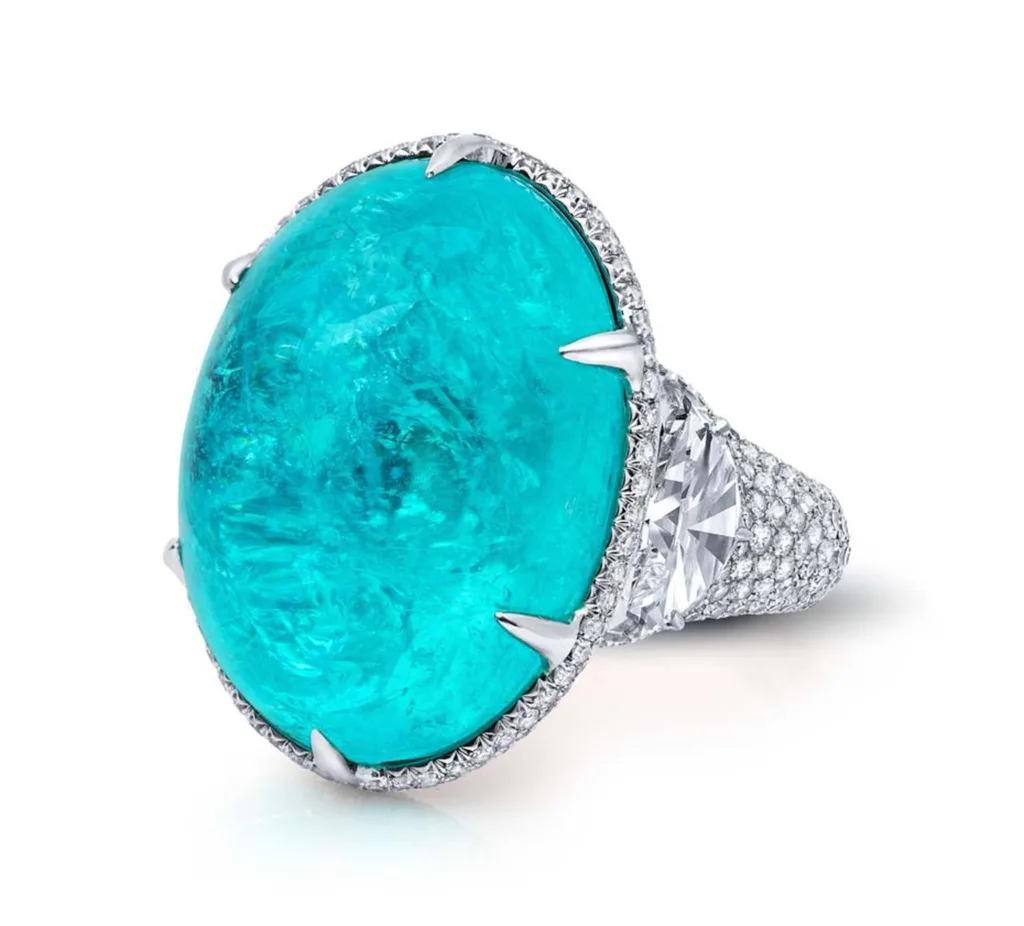
Optical Characteristics:
- Refractive Index: Paraiba Tourmaline exhibits a relatively high refractive index, typically ranging from 1.614 to 1.666. This property contributes to its brilliance and sparkle when light enters and exits the gemstone.
- Birefringence: Like all tourmalines, Paraiba Tourmaline is birefringent, meaning it splits light into two rays as it passes through the crystal, resulting in double refraction. This optical phenomenon can create additional facets of color and brilliance within the gemstone.
- Pleochroism: Paraiba Tourmaline may exhibit pleochroism, meaning it can display different colors when viewed from different angles. This optical effect adds depth and complexity to the gemstone’s appearance, enhancing its visual appeal.
- Fluorescence: Some Paraiba Tourmaline specimens may exhibit fluorescence under ultraviolet (UV) light, emitting a vibrant glow in shades of blue or green. This characteristic is prized by collectors and adds an extra dimension to the gemstone’s beauty.
Overall, the physical and optical characteristics of Paraiba Tourmaline contribute to its status as one of the most captivating and sought-after gemstones in the world, prized for its rarity, beauty, and optical properties.
Paraiba Tourmaline Uses

Paraiba Tourmaline is highly valued and sought after for its stunning beauty, rarity, and unique coloration. It is primarily used in jewelry, where its vibrant hues and exceptional brilliance make it a popular choice for high-end pieces. Some common uses of Paraiba Tourmaline include:
- Gemstone Jewelry: Paraiba Tourmaline is often set into various types of jewelry, including rings, earrings, necklaces, bracelets, and pendants. Its striking colors add a vibrant pop to any jewelry design, making it a favorite among designers and collectors.
- Engagement Rings: Due to its rarity and mesmerizing beauty, Paraiba Tourmaline is occasionally used as a center stone in engagement rings. Its unique coloration makes for an unconventional yet captivating choice for couples seeking something truly distinctive.
- Collector’s Items: Exceptional specimens of Paraiba Tourmaline are highly coveted by gemstone collectors and connoisseurs. Collectors may seek out specimens with exceptional color saturation, clarity, and size, adding them to their collections for their rarity and beauty.
- Investment: Some individuals purchase Paraiba Tourmaline as an investment, anticipating that its rarity and increasing demand will result in appreciation over time. High-quality Paraiba Tourmaline specimens have historically commanded high prices in the gem market, making them attractive investment assets.
- Healing and Metaphysical Purposes: In metaphysical and alternative healing practices, Paraiba Tourmaline is believed to possess various healing properties and energies. It is associated with promoting emotional balance, creativity, and spiritual growth, and it may be used in meditation or energy work.
- Custom Designs and Artistic Creations: Jewelry designers and artisans often incorporate Paraiba Tourmaline into custom-designed pieces and artistic creations. Its unique coloration and optical properties inspire creative expression, resulting in one-of-a-kind jewelry and art pieces.
Overall, Paraiba Tourmaline’s exceptional beauty, rarity, and versatility make it a prized gemstone in the world of jewelry and beyond. Whether adorning a stunning piece of jewelry, adding to a gemstone collection, or serving as an investment asset, Paraiba Tourmaline continues to captivate and inspire enthusiasts and collectors worldwide.
Paraiba Tourmaline’s Impurities and Their Effects on Color
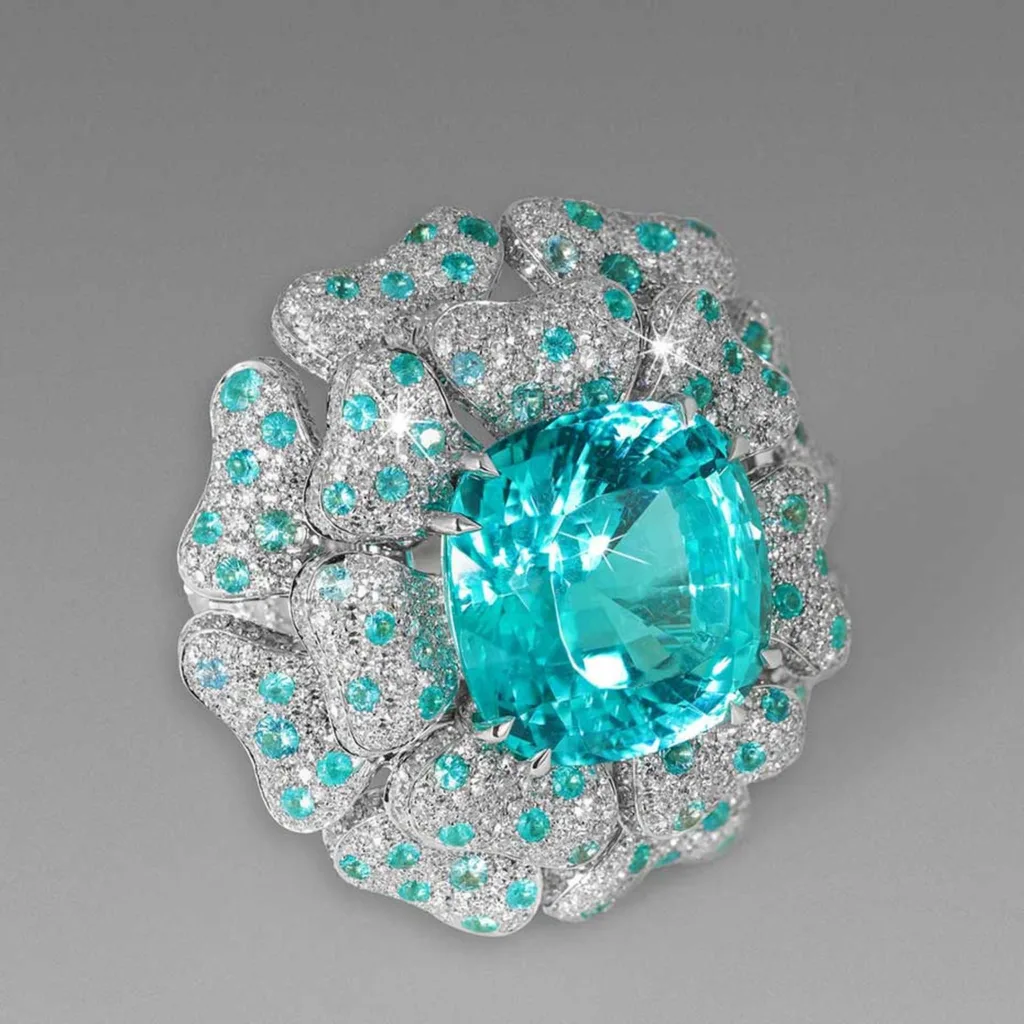
Paraiba Tourmaline owes its captivating colors to the presence of specific impurities within its crystal structure, primarily copper and manganese. These impurities interact with the tourmaline’s chemical composition, influencing its coloration in unique ways. Here’s a breakdown of the impurities and their effects on the gemstone’s color:
- Copper (Cu):
- Blue-Green Color: Copper is the primary chromophore responsible for producing the iconic blue and green hues seen in Paraiba Tourmaline. When present in the crystal lattice, copper absorbs specific wavelengths of light, resulting in a range of blue and green colors, from turquoise and teal to neon blue and vivid green.
- Intensity and Saturation: The concentration of copper within the tourmaline crystal directly affects the intensity and saturation of the blue and green colors. Higher copper concentrations typically result in more vibrant and saturated hues.
- Manganese (Mn):
- Modifier of Color: Manganese acts as a modifier of color in Paraiba Tourmaline, influencing the shade and tone of the gemstone’s blue and green colors. While copper is the primary chromophore, manganese can affect the overall color balance and nuances within the gemstone.
- Shifts in Color: Variations in manganese concentration can lead to subtle shifts in color, such as influencing the balance between blue and green tones or adding undertones of violet or purple to the gemstone’s color palette.
- Iron (Fe):
- Secondary Influence: Iron may also be present as an impurity in Paraiba Tourmaline, although its role in coloration is typically secondary to copper and manganese. Iron can contribute to the overall color profile of the gemstone, influencing aspects such as tone, depth, and color purity.
- Other Trace Elements:
Overall, the interplay of copper and manganese impurities within the crystal lattice of Paraiba Tourmaline produces its remarkable range of vivid and electrifying colors, ranging from vibrant blues and greens to striking violets and purples. The precise combination and concentration of these impurities determine the gemstone’s unique coloration, making each Paraiba Tourmaline a singular and captivating treasure.




































